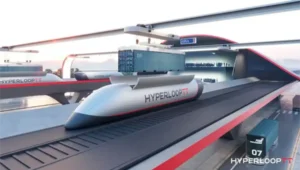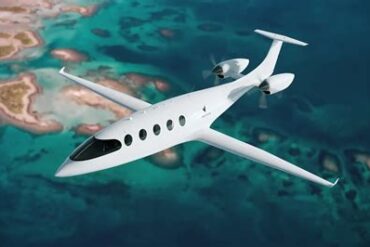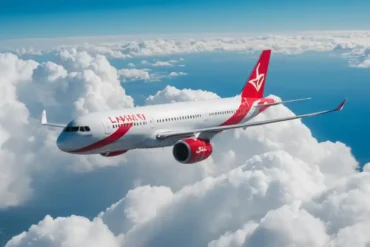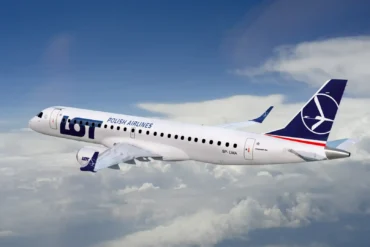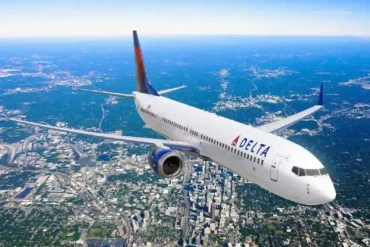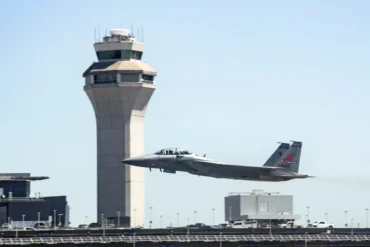Have you heard about the future of transportation? Let me tell you about something exciting called Hyperloop!
Imagine this: In 2028, people got to see an actual passenger Hyperloop capsule for the first time. Picture a train-like vehicle that glides along magnetic rails, but here’s the cool part – it’s inside a tube with almost no air. Sounds like science fiction, right?
Now, let’s dive into the backstory. Back in 2013, Elon Musk (you know, the guy behind Tesla and SpaceX) came up with this wild idea. He wrote a 58-page paper describing a high-speed, ground-level, solar-powered way to move people and goods. We’re talking about pods zooming through steel tubes at speeds up to 1,220 km (760 miles) per hour! These pods would use magnetic levitation and propulsion in a near-vacuum environment. Musk’s vision? Connecting major cities around the world with these hyperloop tubes. He made his “Hyperloop Alpha” paper open source, encouraging everyone to jump in and develop the technology. But get this – even after all these years, only two people have actually ridden in a hyperloop!
So, how does it work? It’s all about magnetic levitation, or maglev for short. One set of magnets makes the vehicle hover above the track (how cool is that?), while another set pushes it forward. The track itself is a low-pressure tube with vacuums that suck out almost all the air inside. It’s like creating a near-frictionless environment for super-fast travel!
People who support Hyperloop say it could be a game-changer for the environment. They argue it would produce fewer greenhouse gases than other types of transportation, potentially saving a lot of energy. Plus, it could help reduce air and noise pollution, ease traffic jams, and even make traveling safer by reducing car accidents. Sounds pretty great, doesn’t it?
Several companies in the United States, like Hyperloop Transportation Technologies and Elon Musk’s Boring Company, are working hard to make hyperloop a reality. Interestingly, another U.S. company called Hyperloop One shut down at the end of 2023, according to Bloomberg. There’s also hyperloop research happening in Canada and the Netherlands. In 2016, the Boring Company built a prototype tube at Musk’s SpaceX headquarters in California, but it was taken down in 2022 after sitting unused for years.
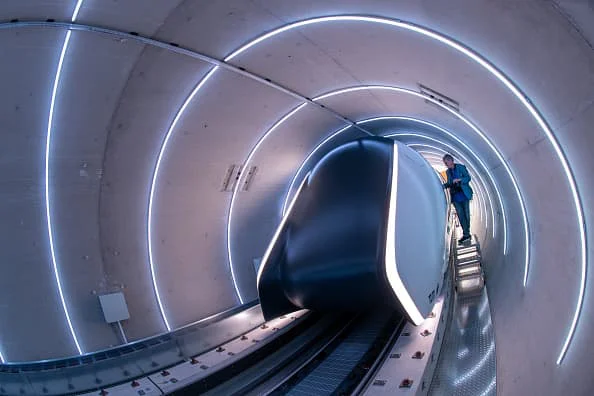
Here’s where things get really exciting: In 2016, Virgin Hyperloop (which later became Hyperloop One) started building the world’s first full-scale hyperloop system – a 500-meter (1,600-foot) test track in Las Vegas. In 2020, they made history when two employees took the first-ever passenger trip through the tube, reaching speeds of 172 km (107 miles) per hour. Since 2017, two more smaller full-scale test tracks have been completed in France and Germany. We’re getting closer to making this sci-fi dream a reality!
But let’s be real – there are still some big challenges to overcome before we can all start zipping around in hyperloops. The biggest issue? Cost. Estimates suggest that building just one kilometer of track for Hyperloop One could cost over $75 million. Yikes! There are also concerns about safety regulations, fitting the infrastructure into existing spaces, and minimizing environmental damage during construction. Some people worry about how long it would take for these super-fast vehicles to stop and potential security risks. Another interesting point is that the g-forces and centrifugal forces passengers might experience could make some people feel motion sick. It’s definitely not a simple project!
As for Elon Musk, he’s admitted that he’s pretty busy with his other companies, so he can’t focus too much on developing hyperloop technology right now. But who knows what the future holds? Maybe one day we’ll all be traveling in these high-speed tubes, revolutionizing the way we get around!
